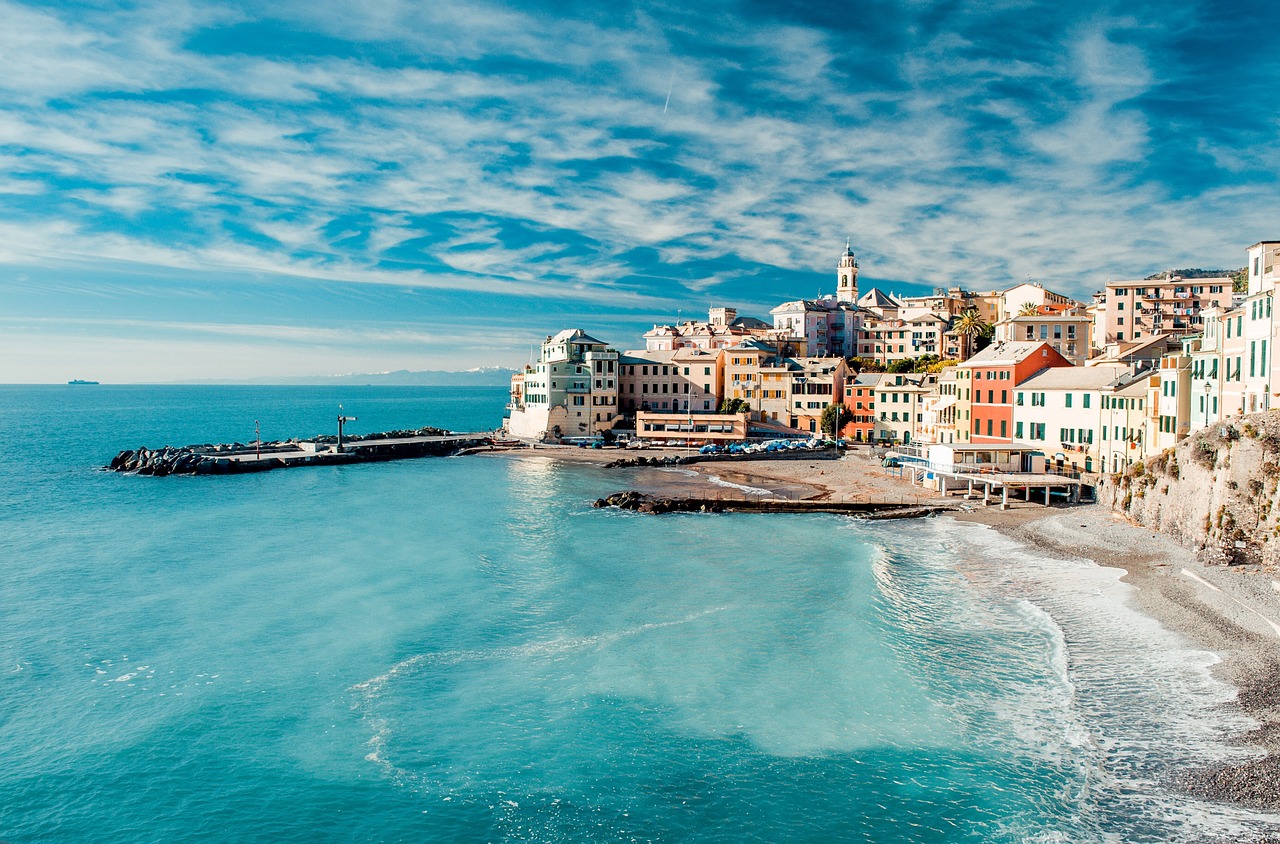Nestled in the heart of the Aegean Sea, Santorini, a crescent-shaped island, beckons travelers with its striking beauty, steeped in myth and draped in an aura of romance. Known for its unique architecture, stunning sunsets, and volcanic landscape, Santorini is not just a destination but an experience that remains etched in the hearts of its visitors.
The Island’s Formation and Unique Geology Santorini’s dramatic landscape is the result of a massive volcanic eruption around 1600 BC. This catastrophic event shaped its rugged cliffs, created the caldera, and sprinkled the island with unique black and red beaches. The island’s geography is a testament to nature’s power, offering breathtaking views and an opportunity to explore a living geological wonder.
Whitewashed Villages and Blue Domes The iconic image of Santorini is its cliff-top villages of Oia and Fira, where whitewashed buildings and blue-domed churches create a postcard-perfect scene. These villages offer a maze of narrow streets, filled with boutiques, cafes, and spots to enjoy panoramic views of the caldera. As the sun dips below the horizon, the sky transforms into a canvas of fiery oranges and pinks, making Santorini’s sunsets a spectacle in their own right.
Exploring Ancient Akrotiri For history enthusiasts, the ancient site of Akrotiri offers a glimpse into a Minoan city frozen in time by volcanic ash. Often likened to Pompeii, Akrotiri’s well-preserved ruins include multi-story buildings, frescoes, and artifacts, narrating the tale of a sophisticated Bronze Age civilization.
Gastronomic Delights Santorini’s cuisine is a delightful fusion of Greek flavors and local ingredients. The volcanic soil contributes to the unique taste of its produce, especially the cherry tomatoes, white eggplants, and the island’s famed fava beans. Sampling local dishes, like tomatokeftedes (tomato fritters) and enjoying a glass of Assyrtiko, a crisp, dry white wine native to the island, are must-do culinary experiences.
Unique Beaches The island’s beaches are unlike any other in Greece. The Red Beach, with its startling red and black volcanic rocks, and the Black Beach of Perissa, with its striking black sand, offer a different beach experience. These beaches are not just about relaxation but are also a showcase of Santorini’s unique volcanic heritage.
Sailing the Caldera A trip to Santorini is incomplete without a sailing tour of the caldera. These tours offer a different perspective of the island, with stops at hot springs, secluded coves, and a chance to swim in the crystal-clear waters of the Aegean Sea.
Local Art and Culture Santorini is also home to a vibrant art scene. The village of Pyrgos, with its art galleries and cultural festivals, is a hub for artists inspired by the island’s beauty. Local crafts, including jewelry and ceramics, reflect the artistic heritage of the island and make for unique souvenirs.
Practical Tips for Travelers
- Best Time to Visit: The best time to visit Santorini is between late April and early November. The summer months are peak tourist season, while spring and fall offer milder weather and fewer crowds.
- Transportation: Renting a car or ATV is a popular way to explore the island, though public buses are also available.
- Accommodation: Santorini offers a range of accommodation, from luxury hotels to budget-friendly guesthouses, many with stunning views of the caldera.
Conclusion Santorini, with its blend of natural beauty, historical depth, and cultural richness, is more than just a Greek island—it’s a destination that captivates the soul. Whether it’s wandering through its charming villages, savoring the local cuisine, or simply basking in the glory of its sunsets, Santorini promises an unforgettable journey through the wonders of the Aegean



